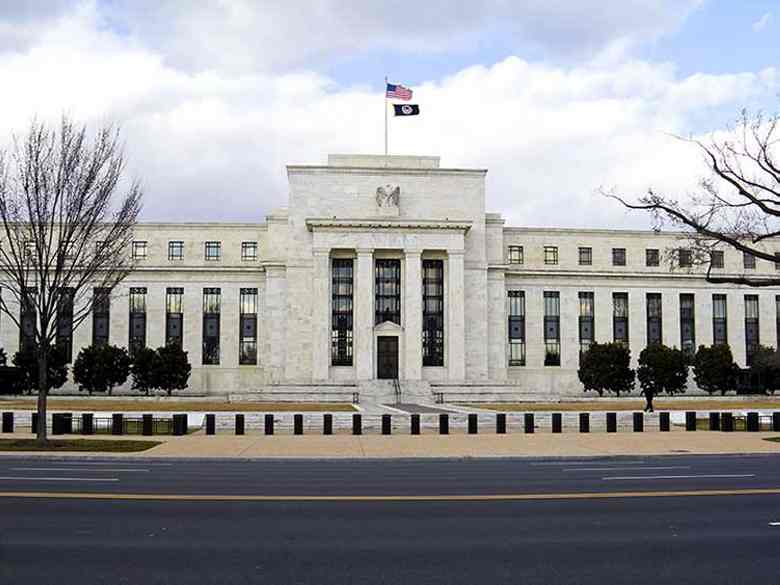Federal Reserve officers considered their present financial coverage as acceptable “for a time” whereas they remained on guard towards home and world dangers that would sluggish the longest U.S. enlargement on report, in accordance with Fed minutes launched Wednesday.
“Individuals mentioned how sustaining the present coverage stance for a time might be useful in supporting U.S. financial exercise and employment within the face of world developments which have been weighing on spending selections,” in accordance with the minutes of the Jan. 28-29 Federal Open Market Committee assembly launched Wednesday in Washington.
The Fed minutes confirmed a broad dialogue as officers thought-about inflation ranges as a software to attain their 2% goal, methods to adapt coverage to fight financial-stability dangers, and the way they’d wind down ongoing repurchase settlement and Treasury-bill purchases.
The report additionally confirmed “a number of” officers pushing for “inflation modestly exceeding 2%” for a time. Such motion “could be in line with the achievement of the committee’s longer-run inflation goal” and “underscore the symmetry of that goal.”
The workers official in command of open market operations informed coverage makers that within the second quarter, reserve situations would “help slowing the tempo of Treasury invoice purchases.”
“Many contributors confused that, as reserves approached durably ample ranges, the necessity for sizable Treasury invoice purchases and repo operations would diminish and that such operations might be steadily scaled again or phased out,” the Fed minutes stated.
The FOMC left the benchmark lending fee unchanged in a variety of 1.5% to 1.75% throughout the gathering, and stated that the setting was “acceptable” to maintain the enlargement and obtain its objectives of most employment and secure costs.
The U.S. economic system started 2020 on stable footing with payrolls rising by 225,000 in January. The jobless fee edged as much as 3.6%, nonetheless close to a half-century low, whereas common hourly earnings climbed 3.1% from a yr earlier.
U.S. central bankers are relying on family consumption — aided by low rates of interest — to maintain development and assist carry inflation again to their 2% goal. Their most popular value measure rose 1.6% in 2019.
Inside their ongoing framework evaluate, officers held their most substantive dialogue thus far about the opportunity of remodeling their inflation goal — presently 2% — into a variety. The evaluate started in early 2019 and is supposed to evaluate whether or not the Fed has the proper instruments and techniques to cope with persistently low rates of interest and low inflation.
Inflation Ranges
The committee thought-about inflation ranges based mostly on three ideas: an “uncertainty” vary, meant to speak how broad inflation outcomes may range and nonetheless be thought-about in line with the goal; an “indifference” vary, emphasizing that coverage needn’t reply to deviations throughout the vary; and an “operational” vary that might be used when officers wished inflation to favor one facet.
Whereas the U.S. economic system began the yr in good condition, the coronavirus has raised questions on world development, together with the potential for spillovers affecting the U.S.
Individuals anticipated development to proceed at a reasonable tempo, supported by accommodative financial and monetary situations. “As well as, some commerce uncertainties had diminished not too long ago, and there have been some indicators of stabilization in world development. Nonetheless, uncertainties in regards to the outlook remained, together with these posed by the outbreak of the coronavirus,” the minutes stated.
Officers noticed consumption spending as more likely to stay on a agency footing, “supported by robust labor market situations, rising incomes, and wholesome family steadiness sheets.”
Powell informed lawmakers in semi-annual testimony final week “it is too unsure to even speculate” on how the outbreak would influence the economic system or if it might current a “materials change” to the outlook, although he stated the influence on China must be “substantial.”
U.S. central bankers are buying Treasury payments at a tempo of $60 billion per thirty days to spice up reserve balances and plan to proceed the operation into the second quarter. They’re additionally conducting time period and in a single day repurchase agreements at the very least via April to offset seasonal calls for for funds and money.
The Fed minutes stated the time period repo operations might be phased out after April.


